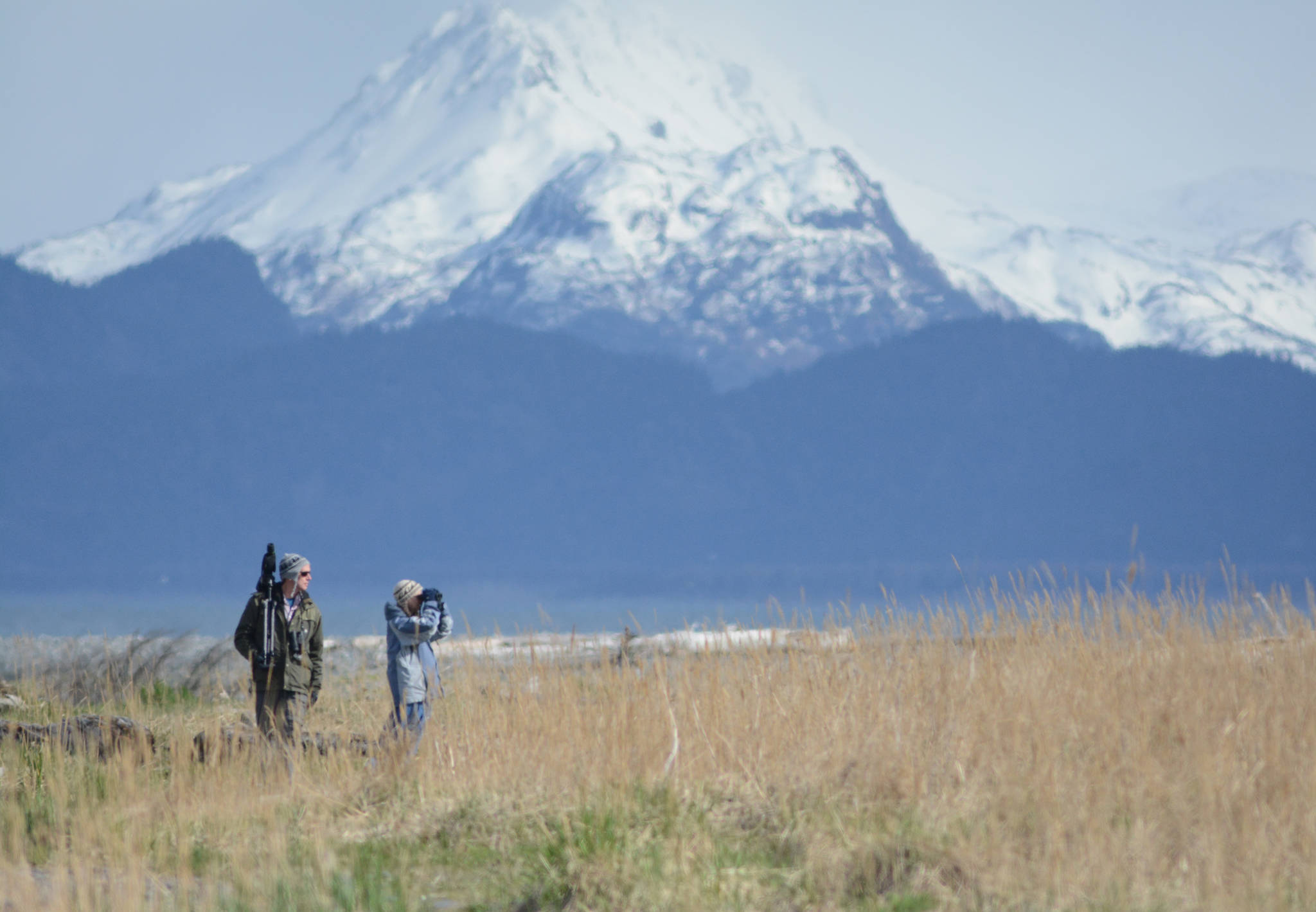Like many imported Alaskans, I have a long list of outdoor activities I acquired after moving here in 1979: skiing, snowshoeing, ice skating, dog mushing, shoveling snow and birding. Having been raised in Florida, it makes sense I didn’t learn snow- and cold-related activities until I arrived in the North.
But birding? I could have taken up birding long ago.
As it happens, Florida and Alaska have the exact same number of possible bird species on their official checklists, 525. Birding might be the most universal of all outdoor activities. You can look for birds most anywhere birds can be seen, which is pretty much anywhere on this planet. Even though I noticed birds and casually observed them in Florida, I didn’t become obsessed until I moved to Alaska.
My transition from “guy who looks at birds” to “guy who buys good binoculars, 15 bird books and stares at dots on the mud flats for hours” started the summer of 1981 when I worked in Utqiagvik, then known as Barrow, and my second summer in Alaska. I’d gone there to work on an archaeological project. Our work day ran until 5 p.m., which meant that after dinner and with Utqiagvik’s midnight sun, I had hours to kill before going to bed.
Located on the Arctic coast just south of Point Barrow, the settled area of Utqiagvik is high and dry ground surrounded by tundra, tussocks and marshes. That is to say, it’s excellent birding habitat. My archaeological worker friends and I took long hikes out onto the tundra just to explore, and it dawned on me that when I went hiking, by default I went birding.
I’d stumble across snowy owls. Parasitic jaegers dive-bombed me when I got too close to their nests. Eiders swooped over the ocean. I didn’t keep a journal, I didn’t have a life list, and I didn’t even have a decent pair of binoculars, but I came to realize that if one hiked in Alaska, you saw birds, and the enjoyment of being outdoors would be enhanced by looking for birds, identifying them and understanding their place in nature.
Since 1981, I have come to see birding as an activity that adds to the enjoyment of the outdoors as well as a pursuit in itself. One spring when my wife and I spent hours trying to figure out the origin of this odd winnowing sound we heard on Diamond Ridge — the snipe — I learned that birding also could be an aural activity.
A lot of birds I observe I don’t necessarily see or even try to look for. I don’t need to see a hermit thrush to appreciate its flutelike call. I have never seen a northern saw-whet owl, but I hear its call often, like that of construction equipment backing up or a smoke alarm going off.
Birding also has a temporal element. The movement of birds through our area, or the changes in activity of resident birds, tells the story of the changing of the seasons. I see bald eagles here in Homer almost every day. When the resident pair that has set up nests near the Lake Street and the Sterling Highway stoplight returns, that will be a clear harbinger of spring. When the varied thrush starts its telephone-trill call, even if there’s 3 feet of snow still on the ground, I know dozens of songs from other species will soon fill up the morning and evening.
In May and June, one of my fondest pleasures is to get up in the morning, let my dog out, and stand on the front porch trying to identify as many bird calls as I can. After a long winter where the loudest sound is the wind roaring through the spruce forest, to hear the oh-dear-me call of the golden crowned sparrow brings reassurance that the world has survived and warmth has returned.
I keep a life list of birds just to keep track of what I see, and an annual bird journal, but I’m not a maniac about this. I do not have a $5,000 spotting scope, I do not plan my trips around birding festivals, and I am for dang sure not as crazy as Noah Stryker, who tried to see as many birds around the world in one year as he could (about 10,000, if you want to know). When I travel, I carry binoculars and bird guide, because birding also adds to the enjoyment of tourism, too.
On March 18, spring birding season starts in earnest. That’s when sign-up starts for the Kachemak Bay Shorebird Festival, the big bird bash here in Homer held May 9 to 12. The festival guide comes out March 14 in this week’s Homer News, with the online version available at http://kachemakshorebird.org.
It’s time to polish my binoculars, get out my journal and start listening. I just know that soon I will hear the sound of ringing telephones in the forest, and the varied thrush will sing again.


